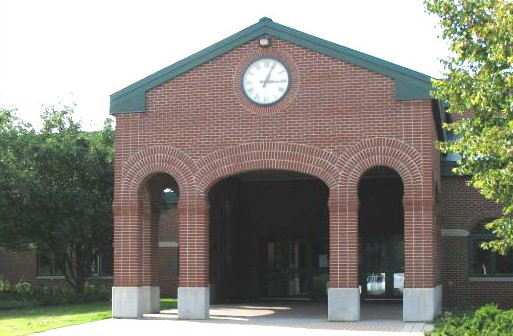DANIEL J. CAREY
FARIFIELD – Daniel J. Carey, 77, passed away at home on Wednesday, November 6, 2024. Daniel was born in Waterville, the son of William and Marie Ann (Proulx) Carey.
He grew up in Fairfield Center, and attended Fairfield schools and graduated from Lawrence High School. After graduation he enlisted in the U.S. Navy and served his country.
Daniel worked as an auto body man and was a part of the local archery club. He also enjoyed woodworking, especially making cabinets. He was a master of his crafts and received many accolades.
He was predeceased by his parents.
He is survived by his children Angela and Shawn; and sister Valerie Tibbetts.
A graveside service will be held Tuesday, December 10, 2024, at noon, at the Niche Wall, located at the Veteran Cemetery, in Augusta.
DENNIS C. KENT
 BENTON – Dennis Charles Kent, 67, passed away on Tuesday, November 12, 2024, following a courageous battle with mantle cell non-Hodgkin’s lymphoma, at Mass General Brigham Spaulding Rehabilitation Hospital. He was born, in Waterville, on August 9, 1957.
BENTON – Dennis Charles Kent, 67, passed away on Tuesday, November 12, 2024, following a courageous battle with mantle cell non-Hodgkin’s lymphoma, at Mass General Brigham Spaulding Rehabilitation Hospital. He was born, in Waterville, on August 9, 1957.
Dennis spent his life in Benton, where he owned and operated a dairy, hay, and wood business while also working at Sappi Fine Paper, in Hinckley, for 36 years.
He graduated from Lawrence High School, in Fairfield, and Bangor Community College, with a degree in agriculture and animal husbandry. His passion for community service led him to serve for many years on the local PAL board, where he supported youth athletics and helped create a positive environment for young athletes. In recent years, he worked alongside local organizations to honor the veterans of Benton, playing a key role in the implementation of the Hometown Heroes Program.
Dennis was passionate about sports throughout his life, playing basketball, softball, and baseball. He made it to Nationals three times with his softball teams and was a devoted fan of the Red Sox, Celtics, and Patriots. However, his greatest joy came from coaching. He took three AAU basketball teams to National tournaments with his sons and cherished the moments when former players greeted him as “Coach.” In recent years, he could often be found on the Winslow sidelines, cheering on his god-grandchildren.
Dennis was the epitome of a caring and loving son, ensuring that both his parents could fulfill their wishes to pass away at home. He was never too busy to plow out a neighbor and would travel hundreds of miles to attend the events of his beloved nieces and nephews.
Anyone who knew Dennis could see where his heart lay – his family. Until the very end, he spoke with endless pride and love about his sons and their families. He always said that his daughters-in-law had him at “Dad,” and his favorite word was “Grandpa.”
Before his recent hospitalization, Dennis and JoAnna enjoyed a two-week adventure in Alaska with Gene Kent and Jennifer Martel. The trip brought him immense joy. On November 9, they celebrated the 50th anniversary of their first date, a milestone Dennis never forgot. Each year, he greeted JoAnna with “Happy Anniversary” as soon as he woke up, followed by his signature, “Gotcha!” This year was no exception. When asked for the secret to a long marriage, Dennis always said, “When I get up in the morning, I say two things: ‘I’m sorry’ and ‘Yes, dear,’ and I’m set for the day.” Of course, he would add that he was “tricked” into marriage, often joking, “When JoAnna and I were dating, she used to make me pies. Now that we’re married, I never get pie.”
Dennis was many things to many people: husband, father, grandfather, son, brother, friend, and coach. This is why he and JoAnna were blessed by the constant stream of family and friends who visited them during their three-month stay in Boston near the end of Dennis’ life. Both Dennis and JoAnna were deeply touched by the warmth and support they received from the people of Boston – from the skilled professionals at Dana-Farber, Brigham and Women’s Hospital, and Spaulding Rehabilitation, to the hotel staff and transportation providers. JoAnna stated that she never felt alone.
Dennis was predeceased by his parents, Charles Kent Jr. and Nina (Bailey); as well as his adopted son, Scott Horne.
He is survived by his wife of 47-years, JoAnna (Mosher), whom he married on June 3, 1977; his two sons, Jonathan Daniel and wife Sara (Rademacher) and Matthew Ryan and wife Jennifer (Samples); and seven grandchildren; his brother, David Allen and wife Phyllis (Libby), of Standish; his sisters, Eleanor Mae Peavey and Clair Culver, of Central Square, New York, and Ruth Ann Doucette and husband David, of Tucson, Arizona; numerous nieces, nephews, godchildren.
A celebration of life will be held on May 31, 2025, at 1 p.m., at the Waterville Elks Lodge #905, in the Pavilion. A graveside service will follow at Brown Memorial, in East Benton.
In lieu of flowers, please bring a pie to the celebration of life or gifts may be made to Dana-Farber Cancer Institute in memory of Dennis Kent to support cancer research and patient care at Dana-Farber Cancer Institute in memory of Dennis Kent, PO Box 84916, Boston, MA 02284 or via their website http://www.dana-farber.org/gift.
JOAN SCIARTILLI
 WATERVILLE – Joan Sciartilli, 90, died early morning Saturday, November 16, 2024, at Lakewood Continuing Care, in Waterville. She was born April 19, 1934.
WATERVILLE – Joan Sciartilli, 90, died early morning Saturday, November 16, 2024, at Lakewood Continuing Care, in Waterville. She was born April 19, 1934.
She was the widow of Nicholas Salvatore Sciartilli, who died 1973. They were married on October 7, 1961, Feast Day of Our Lady of the Rosary, at St. John the Baptist Church, in West Scranton, Pennsylvania. She kept their wedding portrait displayed to honor his memory and also to tell the story of her wedding gown from New York City. Joan was proud of her German Irish Heritage and the upbringing provided by her parents, the late Bridget (Spellman) and Peter Lorsong, she was their youngest and last surviving child of their eight children from Eynon Street, in Scranton.
Joan had a special devotion to the Blessed Mother and her Catholic faith. Over the years she was member at St. John the Baptist church, St Ann’s Basilica, in Scranton Pennsylvania, St. Bridget’s, in Framingham, Massachusetts, and Corpus Christi parish, in Waterville. She was a lifelong member of the Democratic Party and was proud to say she voted in every election since the time she was able, up to and including the recent election this November.
Joan enjoyed living with her daughter Joanne, her son-in-law Danny and their three children in Massachusetts and Maine. Later in life she made her home on Birchwood Drive, in Oakland, with her cousin Tom Spellman, after he retired from government service.
While living at Lakewood Continuing Care, she shared memories and laughs with many CNAs, RNs, Activities coordinators & volunteers. Bingo – collecting magazines wherever and from whomever she could- watching Wheel of Fortune and Jeopardy, saying the rosary, and calling family members.
Joan’s greatest joy in life was from her grandchildren and great-grandchildren; weddings; birth of babies; baptisms and birthday celebrations brought that smile to her face.
Joan is survived by her daughter Joanne and her husband Dan Booth, of Oakland; Margaret and her husband Antonio Solis and their children Maevia, age 7, and Rocco, age 3, of Belgrade, Nicholas and his wife Hayley Booth and their children Nicholas, age 6, and Emmalyn age 3, of Winslow, Zachary Daniel Booth and his wife Matilde Dehaye, of New York City.
Mass was held at Notre Dame Church, Waterville, on Wednesday, November 27, 2024.
The internment will take place at the Cathedral Cemetery, in Scranton, Pennsylvania.
Donations may be made to Catholic Charities, Portland, Maine.
JAMES W. BEGIN
 WATERVILLE – James W. Begin, 81, passed away on Monday, November 18, 2024. Jim was born to Leandre (Tony) Begin and Edith (Noonan) Begin, on May 1, 1943. He was later adopted by his paternal grandmother, Alphonsine (Grondin) Begin.
WATERVILLE – James W. Begin, 81, passed away on Monday, November 18, 2024. Jim was born to Leandre (Tony) Begin and Edith (Noonan) Begin, on May 1, 1943. He was later adopted by his paternal grandmother, Alphonsine (Grondin) Begin.
He attended St. Joseph’s middle school and was a graduate of Waterville High School’s class of 1961. He then went on to graduate from Colby College, in Waterville, in 1967, with a bachelor’s degree in business and an associate’s in engineering. Jim served in the United States Army as infantry, before being honorably discharged in 1968.
He worked for Warnaco Men’s Apparel, d/b/a C. F. Hathaway Shirt Company, in Waterville, for 32 years. Starting as a shipping clerk in 1961, Jim continued full employment while attending Colby College. He held various manufacturing positions from assistant plant manager, in Puerto Rico, to industrial engineering, before retiring in 1994 as director of quality assurance, contracting, and research and development at Warnaco Men’s Apparel. Jim was also a tennis instructor at Champion Fitness, in Waterville, as well as a coach at Waterville Senior High School, Thomas College, and Colby College.
He was predeceased by his parents, adoptive mother; sister Florence Blouin; uncles Noel, Richard, and Roland Begin with whom he grew up; and many dear cousins.
Jim is survived by his life partner, Pamela Strong, of Waterville; sisters Anita Winters, of Oakland, and Carol Jean Fitterling, of Missouri; brother Daniel Bebe, of Missouri; several nieces and nephews.
A graveside service was held at 10 a.m., on Tuesday, December 3, 2024, at St. Francis Catholic Cemetery, 78 Grove Street, Waterville.
Arrangements are under the direction and care of Gallant Funeral Home, 10 Elm Street, Waterville. An online guestbook may be signed, condolences and memories shared at http://www.gallantfh.com.
In lieu of flowers, donations may be made to Waterville Senior High School for the Alphonsine Begin Memorial Tennis Trust Fund, 1 Brooklyn Ave., Waterville, ME 04901.
THOMAS M. LaVERDIERE
 GARDINER – Thomas Michael LaVerdiere, 77, died Monday, November 18, 2024, following a long illness.
GARDINER – Thomas Michael LaVerdiere, 77, died Monday, November 18, 2024, following a long illness.
Tom was born in Waterville, on November 13, 1947, to C. Clayton and Mary E. (Tully) LaVerdiere.
He grew up in Waterville and often fondly recalled the days of bike riding with friends, playing baseball and hockey, and endless hours spent at the Waterville Boys and Girls Club. Tom was educated in Waterville schools. He graduated from Waterville High School, class of 1966.
He moved to Gardiner and married Gina A. (Dorso) LaVerdiere in 1975. They resided in Gardiner where they raised their sons Tom and Andrew.
Tom was employed in auto sales for many years. At the time of his retirement, he had been employed as a sales manager for Charlie’s Motor Mall, in Augusta, for 24 years. He collected vintage cars and trucks over the years, with vehicles from the 1940’s to the muscle cars of the 1960’s, being among his favorite eras. He liked traveling to car shows and swap meets in search of the right parts for his restoration projects. A favorite trip was to the Hershey Car Show and Swap meet in Hershey, Pennsylvania, each fall, or the Spring Car Show in Carlisle, Pa. each year.
After retirement, Tom’s enjoyment of flea markets, auctions, and collecting things became a second career for him as he purchased vintage items and antiques, refinished them, and sold them at the Fairfield Antiques Mall.
Tom had a touch of ADHD, a sprinkle of Archie Bunker, and a work ethic like no other. He was always busy and always had many projects on his schedule. His dogs were his constant companions during his retirement.
Tom and Gina enjoyed traveling, with vacations in Aruba, Hawaii, and Popham Beach, among their favorite travel destinations. He was affectionately known as “Papa” to his grandchildren and loved spending time with them at holiday gatherings, attending their sporting events, BBQs and afternoons at the pool, and trips to the Windsor Fair every year on Labor Day! He also enjoyed trips to Las Vegas, Nevada, with his friends.
Tom is survived by his wife, Gina; his children Hollee Fraser, (Bruce), William LaVerdiere, (April), Tommy LaVerdiere, and Andrew LaVerdiere; his grandchildren, Brandon, Whitney, Nick, Luc, Bill, Gracie, Claire, Drew, James, and Madeline; his siblings Susan Bannister (Don), Charlie LaVerdiere (Brenda), Mary Littlefield, Mark LaVerdiere, Ann West (Rich), and Kathy Worcester (Ed).
He was predeceased by his parents; his sister, Michele LaVerdiere, and his brother-in-law and close friend, Barry Rosen.
At Tom’s request, there will be no formal funeral services. The family will host a celebration of life on Saturday, December 28, from 1 to 3 p.m., in the banquet room of the Augusta Elks Club. Please join the family to share a story or memory and a smile as they remember a life well lived.
Arrangements and guidance are in the care of Staples Funeral Home and Cremation Care, 53 Brunswick Ave., Gardiner.
Condolences, memories, and photos may be shared with the family on the obituary page of the Staples Funeral Home website, http://www.staplesfuneralhome.com.
JAMES W. KNIGHT
 WINSLOW – James W. Knight, 88, of Winslow, passed away on Tuesday, November 19, 2024, at Togus Springs Hospice Unit. Jim was born in Fairfield on November 25, 1935, the youngest son of the late Ralph Knight and Sarah (Savage) Knight.
WINSLOW – James W. Knight, 88, of Winslow, passed away on Tuesday, November 19, 2024, at Togus Springs Hospice Unit. Jim was born in Fairfield on November 25, 1935, the youngest son of the late Ralph Knight and Sarah (Savage) Knight.
Jim attended Winslow schools where he excelled in sports and later coached little league. Jim was a diehard Boston Red Sox and Boston Bruins fan. Jim continued his love for sports by attending his grandchildren and great-grandchildren’s sports activities.
Jim served in the U.S. Army and was a member of the Army National Guards. He was a Winslow Volunteer Fireman for 18 years and a Winslow Reserve Policeman. Jim retired from Waterville Welding, in 1997.
Jim was a member of Corpus Christi Parish, in Waterville/Winslow where he served as a Eucharist Minister and served on the parish council. Jim was a member of the Pre-Cana committee as part of the speaker couples. Jim was a life member of Winslow KC’s Council #7300 and 4th degree Waterville Assembly.
Jim’s favorite place was Great Moose Lake where he enjoyed spending time with his family, boating and fishing. After retirement, Jim started playing golf and it became a favorite hobby of his. Jim also was on a few bowling leagues.
He was predeceased by his wife Patricia; his son Gregg; grandson Tobey Hockridge; four sisters Katherine, Helena, Annie, and Muriel, and two brothers Robert and Ralph.
Jim is survived by his daughters Cindy Hockridge and husband Stu, of South China, Tricia Maheu and husband David, of Belgrade; his daughter-in-law Patricia Knight, of Arizona; three grandchildren Kim Knight, of Arizona, her three children, Alex, Aiden and Maddie, Danny Knight, of Arizona, Erik Maheu and his wife Robyn, from Winslow, their two sons Maddox and Julien; Tobey’s daughters Payton and Paige, from Colorado Springs, Colorado; and several nieces and nephews.
A memorial Mass was held on Wednesday, Wednesday, December 4, 2024, at 10 a.m., at Notre Dame Catholic Church, in Waterville. The family requests no flowers.
REGINALD L. MOODY
 MADISON – Reginald Lloyd Moody, 77, lost his battle with cancer on Tuesday, November 19, 2024. Reggie was born on November 8, 1947, the son of Albert and Mildred Moody.
MADISON – Reginald Lloyd Moody, 77, lost his battle with cancer on Tuesday, November 19, 2024. Reggie was born on November 8, 1947, the son of Albert and Mildred Moody.
Reggie graduated from Madison Area Memorial High School and later spent many seasons coaching sports from pee wee football to high school baseball. He was a veteran of the U.S. Navy and believed serving his country was a duty and privilege. Reggie was also a member of North Anson Masonic Lodge #28 and a past District Deputy of the Grand Lodge of Maine.
Reggie was an avid outdoorsman and hunter. He spent many years with his father and brother hunting in the Maine woods. He loved traveling with his wife from camping to his trips to Myrtle Beach to play miniature golf and go shopping.
He was predeceased by his father Albert and mother Mildred Moody.
Reggie is survived by his soulmate and wife of 35 years, Barbara; sons Jeffrey, of Anson, and Jared and wife Angela, of Sebring, Florida; grandson Larz and wife Nastazia; and great-granddaughter Aubrey, of Sebring, Florida; his brother Ronald and wife Sally, of Madison; as well as nieces, nephews, and many cousins.
A celebration of life will be held at Crossroads Bible Church, on Saturday, December 7, 2024, at 11:30 a.m.
Please visit Reggie’s memorial page at https://svremembrancecenter.com/obituaries/reginald-moody where condolences, photos, and special memories may be shared. In lieu of flowers, donations may be made to St. Jude’s Children’s Hospital or, North Anson Masonic Lodge #28, in care of Linwood Cowan.
GEORGIA A. WATSON
 PALERMO – Georgia “Missy” Averill Watson, 92, a long-time resident of Palermo, passed away on Thursday, November 21, 2024. She was born July 31, 1932, the daughter of James Melvin “Mel” and Marion “Matt” Lucinda Bowmen Haskell. Missy was a Mayflower descendant.
PALERMO – Georgia “Missy” Averill Watson, 92, a long-time resident of Palermo, passed away on Thursday, November 21, 2024. She was born July 31, 1932, the daughter of James Melvin “Mel” and Marion “Matt” Lucinda Bowmen Haskell. Missy was a Mayflower descendant.
Missy loved spending time with her family and friends. She welcomed all her children’s friends and treated them like a member of the family. Her door was always open to all.
Missy attended Erskine Academy,, in South China, and graduated at the age of 16. She was an avid reader and loved to do jigsaw puzzles. She held a strong work ethic, starting at a young age, helping her parents by assisting her father in the woods by stripping bark off trees that he harvested and assisting her mother with household chores and providing care for her siblings. She continued that ethic throughout her life working in the various shoe shops around the central Maine area. Once that industry fell away, she entered the computer chip industry and went to work at Digital Corp., in Augusta. She also worked at Crow Rope, in Winslow, braiding rope and picking potatoes for Clair Bradstreet, with all her children in tow.
Missy married Ernest Watson in July 1957. They spent 60 years together until his death in 2017. Together they raised six children.
Survivors include her children, Sheila Schooler and her partner Barbara Conner, of Biddeford, Wendy Durham and her husband Timothy, of Torrington, Connecticut, David Watson and his wife Ramona, of Weeks Mills, Jeffrey Watson and Dennis Watson, of Palermo, and Phillip Watson, of China; 12 grandchildren; 19 great-grandchildren; and one great- great-granddaughter; her sister Virginia “Ginny” Wellman, of Palermo; her brother Gary Haskell and his wife Kathy, of Weeks Mills; her sisters-in-law Mary Haskell, of Weeks Mills, and Carrie McGrath, of China.
She was predeceased by her husband Ernest Watson; parents Mel and Matt Haskell; brothers Charles “Chub” Haskell, James “Tero” Haskell, Lawrence “Lonnie” Haskell, her sisters Vernie French and Betty Keene; her great-grandson Noah Nixon and great-granddaughter Tabitha Stearns.
A celebration of life will held (date to be determined) and her burial will be a private family event at the Maine Veterans Cemetery in Augusta, Maine.
JAMES P. THOMPSON
 SIDNEY – James P. Thompson, 86, of Sidney, passed away on Sunday, November 24, 2024, at home. Born on March 23, 1938, in Augusta, the son of the late Fred A. and Harriet (Webster) Thompson. He graduated from Belgrade High School, in 1955, and from Bates Business School, a few years later.
SIDNEY – James P. Thompson, 86, of Sidney, passed away on Sunday, November 24, 2024, at home. Born on March 23, 1938, in Augusta, the son of the late Fred A. and Harriet (Webster) Thompson. He graduated from Belgrade High School, in 1955, and from Bates Business School, a few years later.
In 1969, he married the love of his life, Lois Higgins. After their daughter Rachel was born, he built a home for them in Belgrade where they lived for many happy years. Jim loved planting big gardens and sharing his vegetables and flowers with neighbors and friends.
Jim was a dedicated elder at the Augusta Gospel Hall, where he served God and cared for the spiritual needs of others. He also sold Bibles and books from his home and traveled to Bible conferences throughout New England and beyond, selling them. In his generosity, he gave away almost as many books as he sold. He had a heart for people and cared about their spiritual well-being. He loved talking with them and sharing what mattered most to him.
Jim worked for the State of Maine as a systems analyst until his retirement at the age of 55, after which he worked for the Christian Civic League. By this time, he and Lois were empty-nesters, so he built a new home for them in Sidney on the property he had grown up on. He loved being out in the woods, cutting down trees, and working on his land.
As the grandchildren were born and grew, he delighted in spending time with them and took great pride in their accomplishments. He deeply loved his family.
Jim is survived by his wife Lois; his daughter Rachel and her husband Bryan (whom he loved as a son); his grandchildren, Theanna, Abigayle, James (and his wife Janneylee), Benjamin (and his wife Daniela); and his great-granddaughter, Elena; sisters Ruth Thompson and Priscilla Smith; and many nieces and nephews.
The visitation and funeral were both on Saturday, November 30, 2024, at the Knowlton and Hewins Funeral Home, 1 Church Street, Augusta.
Condolences, memories, and photos may be shared with the family on the obituary page of the Knowlton & Hewins Funeral Home website, http://www.khrfuneralhomes.com.
ANNE L. BOULETTE
 AUGUSTA – Anne L. Boulette, 83, passed away peacefully, Sunday, November 24, 2024, following a brief illness. She was born in Waterville, on May 30, 1941, the daughter of the late Gerald J. Letourneau and Ursula (Letourneau) Poulin.
AUGUSTA – Anne L. Boulette, 83, passed away peacefully, Sunday, November 24, 2024, following a brief illness. She was born in Waterville, on May 30, 1941, the daughter of the late Gerald J. Letourneau and Ursula (Letourneau) Poulin.
In September 1963, Anne married Jerome A. Boulette, with whom she shared a deep and enduring love. Together, they raised two children, Maryanne and Jerome “Jay”, both of whom carry on her legacy of kindness.
Anne’s career at KSW Federal Credit Union began in 1968 as a teller. Over the course of her 35-year career, she advanced to the position of CEO before her retirement in May 2003.
A devout Catholic, Anne found solace and strength in her faith, attending Mass regularly at the churches of Corpus Christi Parish. Her commitment to her faith and community was a cornerstone of her life. Anyone who was blessed to have Anne in their life knew what love and generosity were. She will be remembered for her unwavering love for her family and her deep faith. She leaves behind a legacy of kindness that will inspire all those who knew her for years to come.
Anne was predeceased by her parents; a sister, Irene Philippe Poulin; and several close family.
Anne is survived by her son, Jerome “Jay” Boulette; daughter, Maryanne and her husband Darryll Fotter; grandsons Robert Fotter, Nathaniel Fotter, Geoffrey Fotter and Sadie; a great-grandson, Jason Fitch; sisters Ida Letourneau, Elizabeth Lederman and her husband Allen; several nieces and nephews.
A Mass of Christian Burial will be held on Thursday, December 5, 2024, at Notre Dame Catholic Church, 116 Silver St., in Waterville, at 10 a.m. A burial for the immediate family will follow at St. Francis Catholic Cemetery, Grove Street in Waterville.
Arrangements are in the care of Burpee, Carpenter and Hutchins Funeral Home, 110 Limerock St., Rockland, ME 04841.
In lieu of flowers, donations in her memory may be made to The Lighthouse Soup Kitchen, or the Waterville Homeless Shelter in Waterville.
GAIL A. BESSON
 SHAWMUT – Gail A. Besson, 80, of Shawmut, died following a long illness with dementia, on Sunday, November 24, 2024, at the Maine Veterans Home, in Augusta. She was born in Waterville, on December 15, 1943, daughter of Celia (Breton) and Laurier Hubert.
SHAWMUT – Gail A. Besson, 80, of Shawmut, died following a long illness with dementia, on Sunday, November 24, 2024, at the Maine Veterans Home, in Augusta. She was born in Waterville, on December 15, 1943, daughter of Celia (Breton) and Laurier Hubert.
She was educated in local schools and graduated from Waterville High School.
After graduation, she joined the work force and worked for Federal Trust Company, in Waterville. After marrying and starting her family and living in Winslow for a couple of years, her and her family moved to Anson. Gail worked for Madison Paper Industries for several years until she decided to follow in her mother’s footsteps and go to school for Cosmetology. Gail opened her own shop at her home which she enjoyed very much. In 1988, Gail married Richard Besson and they bought a home and moved to Shawmut. Gail went to work for the Maine Department of Health and Human Services from which she retired.
Gail enjoyed knitting, reading, watching Hallmark movies (right up to the end), going to the movies, going to the beach, swimming in her pool, and shopping. She could never have enough shoes or jewelry. Most of all, Gail enjoyed family gatherings. She loved having her family and friends over for the annual lobster bake in the summer and also for the big Christmas gathering each year. Gail went out of her way to make sure everyone had one of their favorites to eat!
Gail was predeceased by her husband of 29 years, Richard Besson, and her parents, Laurier and Celia Hubert.
Gail is survived by her daughters, Ann Holzworth and husband Jay, Michelle Hodgkins and husband Duane; her grandchildren, Autumn Holzworth, Evan Holzworth, and Hallie Jackson; her brother, Ernest Hubert and wife Alice; niece Maria Hubert; nephews Jeff Hubert and wife Marcia, and Larry Hubert.
A Mass of Christian Burial will be celebrated on Saturday, December 7, 2024, at 11 a.m., at Notre Dame Catholic Church, 112 Silver Street, Waterville, with a reception immediately following in the church hall.
Services are in the care of Veilleux Redington Lawry Brothers Funeral Home 8 Elm Street, Waterville, Maine.
In lieu of flowers, donations can be made to the Maine Veterans Home, 35 Heroes Way, Augusta, ME 04330.
DAVID L. GAY
 WEEKS MILLS – David Laurice Gay, 62, died peacefully at home on Monday, November 25, 2024, following a long illness. David was born in Augusta, on June 27, 1962, to Roland L. Gay and Hilda Robbins Gay.
WEEKS MILLS – David Laurice Gay, 62, died peacefully at home on Monday, November 25, 2024, following a long illness. David was born in Augusta, on June 27, 1962, to Roland L. Gay and Hilda Robbins Gay.
David graduated from Erskine Academy, in South China, in 1980, and the Central Maine Vocational Technical Institute, in 1982, having earned a degree in machine technology. David went on to work for a few years at Mid-State Machine, inWinslow, then moved on to Bryant Pond to ply his trade before landing at Kennebec Technologies where he finished his career when he was recently forced to retire due to his illness.
When David was a younger man, he enjoyed snowmobiling with friends and family. David also spent free time assisting family on whatever building projects were under development. David could always be counted on to lend a hand. David was fortunate enough to travel to Alaska with his father on a fishing expedition and brought home many exciting tales of the adventures he shared with his dad and a few fish. David also enjoyed camping trips with his family and enjoyed every moment he could that was spent with his nieces and nephews. David especially enjoyed hosting family get togethers at the gazebo he built on his beautiful, well maintained property, in Weeks Mills.
David is survived by his mother Hilda Robbins Gay; sisters Beth Getchell and her husband Chip and Debra Bartlett and her husband Richard Jr; nieces Michelle Solomon and Nicole Lovering; nephew Jacob Solomon and his wife Natasha; great-nieces Alexis Buotte, Isabelle Solomon, Gracie and Kinsley Harris, and Jasmine Lovering; great-nephews Noah and Patrick Solomon and Zachary Lovering; and several aunts, uncles, and cousins.
David was predeceased by his father Roland Gay who recently passed away on November 11, 2024; and niece Amanda Harris (Bartlett).
A funeral service was held at Plummer Funeral Home, 983 Ridge Rd., Windsor, ME 04363, at noon, on Saturday, November 30. Interment followed at Deer Hill Cemetery in China.
Condolences, stories and photos may be shared by visiting http://www.plummerfh.com
In lieu of flowers, donations in memory of David may be made to the Weeks Mills Baptist Church, 13 Deer Hill Rd., Weeks Mills, ME 04358.
NORMAN E. SMITH
 MADISON – Norman Earl Smith, 82, died peacefully on Monday, November 25, 2024. Norman was born on April 11, 1942, in Des Moines, Iowa.
MADISON – Norman Earl Smith, 82, died peacefully on Monday, November 25, 2024. Norman was born on April 11, 1942, in Des Moines, Iowa.
After graduation he joined the U.S. Navy where he served 20 years and retired as a Navy Chief. He then worked at Solon Manufacturing, in Skowhegan, as a night supervisor.
He was predeceased by his parents Robert and Eva Smith, of Des Moines, Iowa, and granddaughter Pearl Smith, of Los Altos, California.
Norman is survived by his wife of 61 years Elizabeth Smith; three children, Julie (Sobhy) Girgis, Jim (Fan Liu) Smith, and Joseph (Brandi) Smith; six grandchildren, Alyssa (Kyle) LeBlanc, Joshua (Kirstie) Girgis, Nathan (Louisa) Smith, Logan (Briana) Smith, Jacob (Kaitlin) Girgis, and Anna Smith; a great-granddaughter, Sophia Grace Smith; two sisters; Barbara Maier, and Irene (John) Thomas, of Iowa; along with several nieces and nephews.
Please visit Norman’s memorial page at https://svremembrancecenter.com/obituaries/norman-smith-nov-2024 where condolences, photos, and special memories may be shared.
WILLIAM E. YORK
 SKOWHEGAN – William Eldred York, 96, passed away on Monday, December 2, 2024. Bill was born June 3, 1928, in the Forks Plantation, the second son of Walter York and Leona Innes.
SKOWHEGAN – William Eldred York, 96, passed away on Monday, December 2, 2024. Bill was born June 3, 1928, in the Forks Plantation, the second son of Walter York and Leona Innes.
In 1949 Bill met Nancy Jane Towne of Benton. They were married June 24, 1950, enjoying 74 years of marriage.
After graduating Bingham High School in 1945, Bill attended the University of Maine Orono.
He loved the outdoors, especially being in the woods. Bill spent his adult life as a woodsman. He was first in business with his brother Carroll operating a logging business. He later designed and built his own sawmill, in Caratunk. After a few years, he went bigger and better building his second and final sawmill which took him through to his retirement.
In Bill’s younger years he was part of the construction crew building Indian Pond Dam, where he mixed all the concrete for its construction.
He was a member of the Masons, the Eastern Star, the Caratunk Congragationalist Church and the Federated Church, in Skowhegan.
Bill was active in town government and community affairs including being an active member of the school board.
Bill and his wife Nancy raised their family in Caratunk. In 1981 they moved to Skowhegan. Once the family was grown, together they enjoyed many years of travel throughout the U.S. and Europe. For 11 years they also enjoyed their Florida winter home in St. Cloud.
He was predeceased by his parents, son Robert York, and four siblings, John York, Carrol York, Shirley Breau and Colby York.
Bill is survived by his wife Nancy; son Walter York and companion Michele; a daughter Betty Giguere and husband Jon; 11 grandchildren and 16 great-grandchildren.
Funeral services will be held at The Federated Church, in Skowhegan, Monday, December 9, 2024, at 11 a.m. There will be a luncheon and fellowship time immediately following in Fellowship Hall.
 by Peter Cates
by Peter Cates

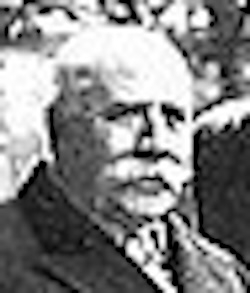
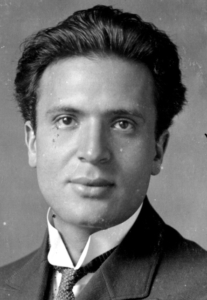

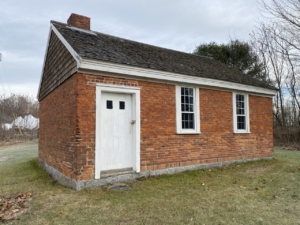



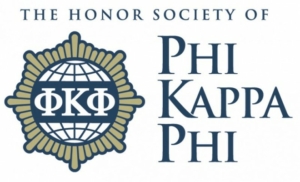 Danica Serdjenian, of Waterville, was recently elected to membership into The Honor Society of Phi Kappa Phi, the nation’s oldest and most selective all-discipline collegiate honor society, at University of Rhode Island. Serdjenian is among approximately 20,000 students, faculty, professional staff and alumni to be initiated into Phi Kappa Phi each year. Membership is by invitation only and requires nomination and approval by a chapter.
Danica Serdjenian, of Waterville, was recently elected to membership into The Honor Society of Phi Kappa Phi, the nation’s oldest and most selective all-discipline collegiate honor society, at University of Rhode Island. Serdjenian is among approximately 20,000 students, faculty, professional staff and alumni to be initiated into Phi Kappa Phi each year. Membership is by invitation only and requires nomination and approval by a chapter. It’s one of Winslow’s most beloved holiday traditions! On Saturday, December 7, from noon to 3 p.m., Winslow Congregational Church (12 Lithgow Street) will be offering over 400 incredibly yummy, ready-to-be-baked turkey pies for sale. The cost is $15 per pie (2 for $25), with all proceeds going to empower the Christian/humanitarian work of the church, and for building improvements and repairs.
It’s one of Winslow’s most beloved holiday traditions! On Saturday, December 7, from noon to 3 p.m., Winslow Congregational Church (12 Lithgow Street) will be offering over 400 incredibly yummy, ready-to-be-baked turkey pies for sale. The cost is $15 per pie (2 for $25), with all proceeds going to empower the Christian/humanitarian work of the church, and for building improvements and repairs.